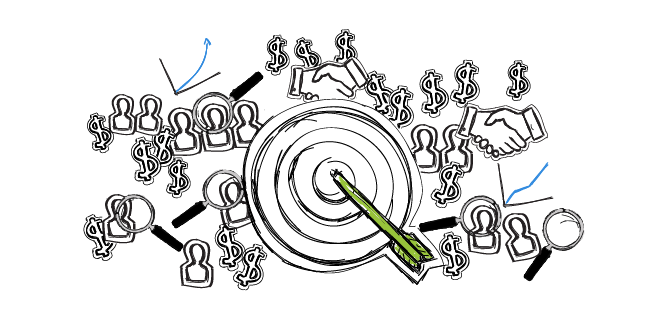Personalization is one of the golden rules of cold emailing. Throughout this blog, you’ll find many arguments behind using personalized snippets in your email copy. The more personalized it is, the higher the chance of getting a reply.
Advanced personalization snippets require a bit more effort to find than just the basic ones, such as ‘name’ and ‘company’, but you can make this process easier by using social listening tools. Keep reading to find out how to use them to better personalize your cold mailing campaigns.
Why does personalizing cold emails matter so much?
Let’s start with the basics. Why is personalization so important?
There are two aspects that come into play here.
#1 It influences email deliverability
For starters, personalization is key to getting good deliverability when you’re sending emails at scale. If you send dozens or hundreds of the same email, SPAM filters might take you for a spammer. The filters scan the emails and “read” every few words. If they happen to be the same in every email, the filters may get triggered and send your emails to the SPAM folder or stop them from being delivered altogether. Advanced personalization signals that the messages are being sent by a real human being.
#2 It gets you replies
Personalization also plays a crucial role in forging trust with the recipients of your emails and, as a result, possibly getting a higher positive reply rate. When prospects see there’s a real person on the other side, they’re more likely to reply.
It’s not the only element of your cold outreach that matters, but it’s a significant one. If you send personalized messages to the right prospects at the right time, chances are you get truly great results.
Thus, put snippets in your email copy. If you need a basic guide on snippets, check out one of our previous posts.
Nevertheless, it’s difficult to find the right information that would be relevant for our email copy. Is there a tool we can use? Perhaps a tool for prospecting? Let’s see.
What tools can help us in advanced email personalization?
Prospecting tools can only get us so much info. They provide us with firmographic data, e.g. type of company, industry, number of employees, technologies they’re using, their sales cycle, revenue, etc. In other words, they help us determine whether a lead is a good fit for our company and product.
They’re great for getting such data, but don’t show you the information you could use to get advanced personalization snippets, such as an event your prospects have been to recently, an article they just published or an award they got. You won’t be able to tap into your niche’s values, interests, opinions, and attitudes, either.
Since you aren’t able to get that kind of information with prospecting tools, does that mean you have to dig it up individually for each prospect from social media and forums? That would be ideal. Yet, there is software that could save you time while maintaining the same level of quality. It’s a social listening tool. It could certainly help you out with finding information and creating the right snippets that make your email copy personalized to every recipient.
What about social listening tools?
The main functionality of a social listening app is searching for any mentions about your brand and relevant keywords online and analyzing them so you can then act accordingly. In other words, you’re listening to your audience (scanning the web in search of mentions that signal interest – be it positive, neutral, or negative – in your brand and product or service) so you can make a connection with them.
And social listening tools are, of course, the tools that make this process a whole lot easier and faster.
Tracking and reacting to what people are saying about you online may be a smart business move on many levels: it may help you manage your brand’s reputation online, gauge trends in your niche, take your customer support to the next level by reacting to your customers’ problems in real time or build a loyal community.
But you could also leverage social listening tools – such as Mention, Agorapulse, Awario or Brand24, to name a few – to create extra personalized snippets for your cold outreach campaigns.
What does it look like in practice?
Let’s say that you’re working in a lead generation agency and you just struck a deal to generate leads for a big software house. At the beginning of your journey, out of all social listening tools out there, you’ve decided to go with Brand24. What should you look for in the tool to find the snippets you need? Let’s see.
- Search for keywords connected to your prospects and their niche and set up a new ongoing project.
- Make time to monitor them daily to find the prospects and info you’ll use in the personalized snippets.
- To make things easier, you can integrate the tool with Slack, if you’re using it at your company, and see the mentions directly in one of the channels.
Now let’s consider a different scenario. You’re a consultant seeking to find partnerships with other consultants in order to promote your Google Ads course. You’d like to reach out to people who have been giving advice on Google Ads.
To do so, you could try a different approach than the one described above. You could, for example, follow hashtags such as #GoogleAds or #GoogleAdvertisement on Twitter (or a different source), and create a campaign for the prospects that you found this way. You can do this with a few sources at once: monitor them separately for your chosen keywords or hashtags and then create segmented outbound campaigns.
Here’s another example: you’re a SaaS company that targets fintech enterprises. You’ve set up an ongoing campaign in which you’re monitoring keywords relevant to your industry. You noticed several mentions about a certain fintech conference and decided to target people who showed interest in it.
- Here’s what you could do:
Go back to the project settings and add keywords describing said conference (or you could just launch a new project). - After the tool has collected some mentions about the topic, you can scan them and see what people are saying about the conference.
- You may also tag the sentiment: is what they’re saying positive or negative? Perhaps you could use this for snippets when creating your cold email campaign for that prospect group.
To sum up
Social listening tools can give you a unique advantage when you’re creating cold outreach campaigns. You can leverage them to find advanced personalization snippets for your emails. This will improve the deliverability of your messages – and possibly the reply rate as well.
Is this an approach you’re interested in trying? Or perhaps you’re using it already for cold outreach? Let us know in the comments.
READ ALSO

A Quick Guide to Ramping Up Lead Generation on Twitter
Well-run social media accounts can boost your lead generation. This is a premise our guest writer for today argues. And rightly so, Twitter positions well in Google, so prospects who google your brand stumble on your Twitter account too, as I've written before. Then, it's powerful as a prospect warm-up method. But how to boost your lead generation organically?

6 Trends in Cold Email that Will Help You Get New Clients Abroad
We’re witnessing the renaissance of B2B cold emailing in outbound lead generation and sales. For the last several years cold calling 2.0, described in the famous Predictable Revenue by Aaron Ross, is becoming increasingly popular in the US and Western Europe. It appears, however, that the method requires more and more advanced tactics to be equally effective as it was only a few years ago.

Account Based Sales Development 101: What Is It? How Does It Work?
If you're doing outbound sales, you've probably heard about the ABSD (Account Based Sales Development) trend lately. Is it new? Is it for everyone? Is it a revolutionary approach that will bring you $$$ as soon as your sales team adopts it? What is it, really? Check out the short introduction to ABSD in simple words.

